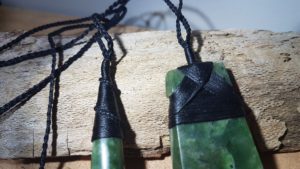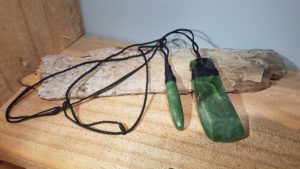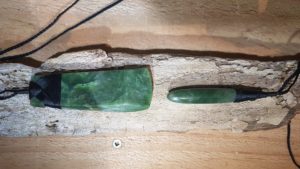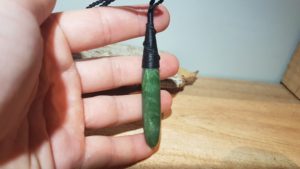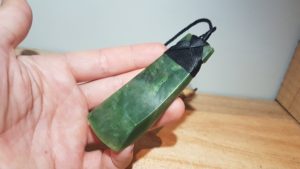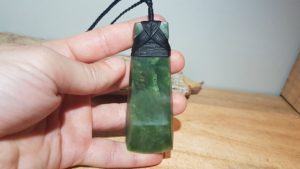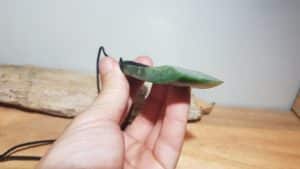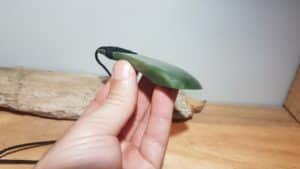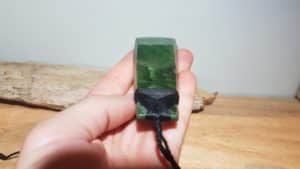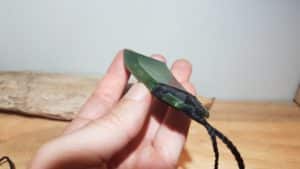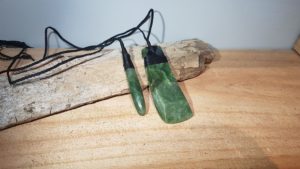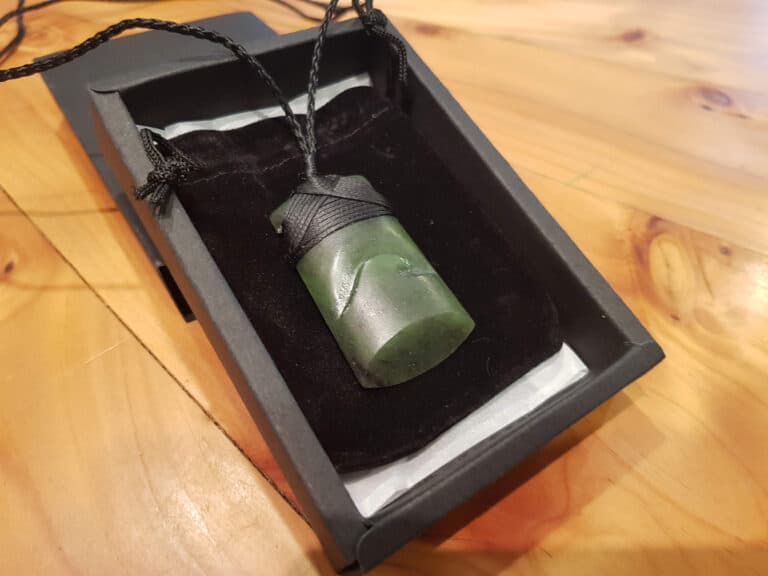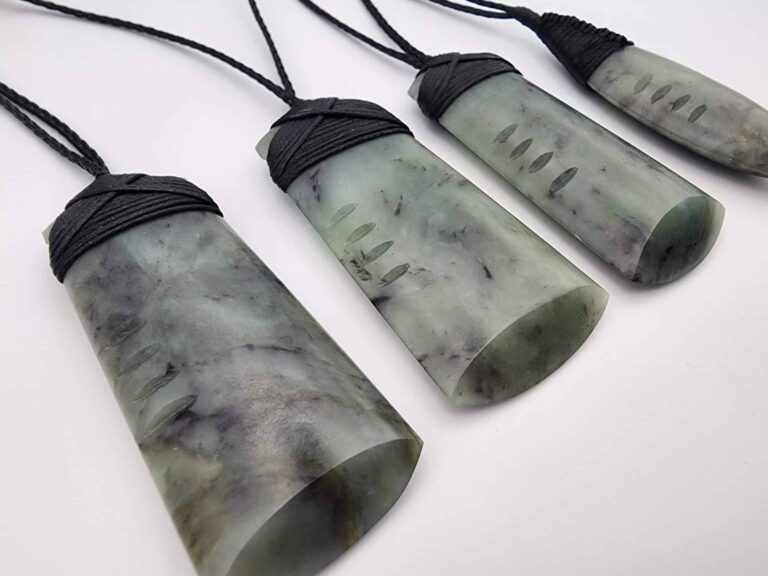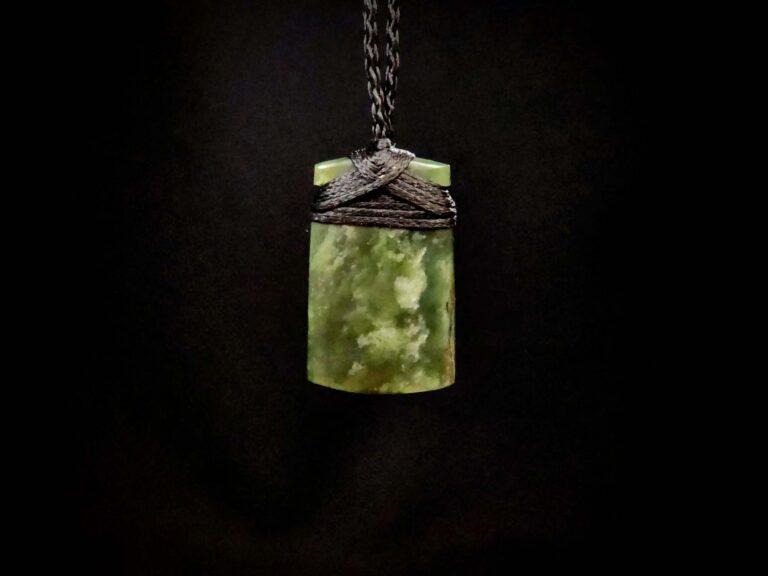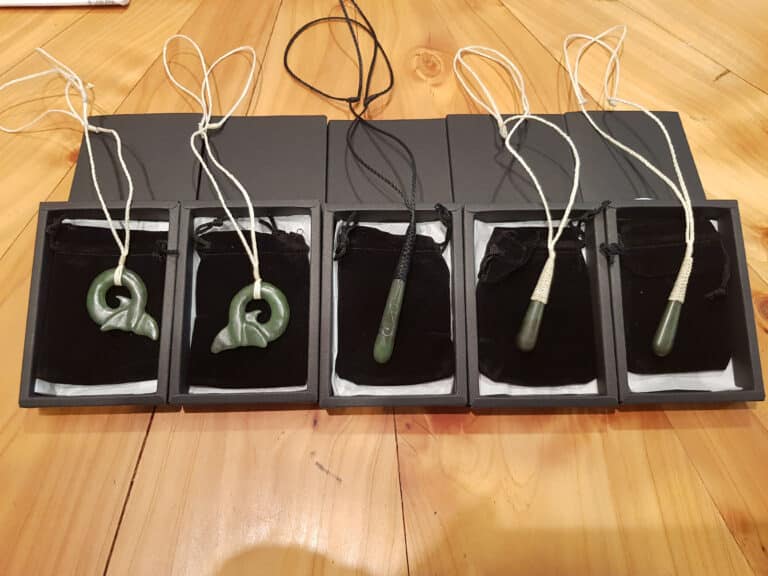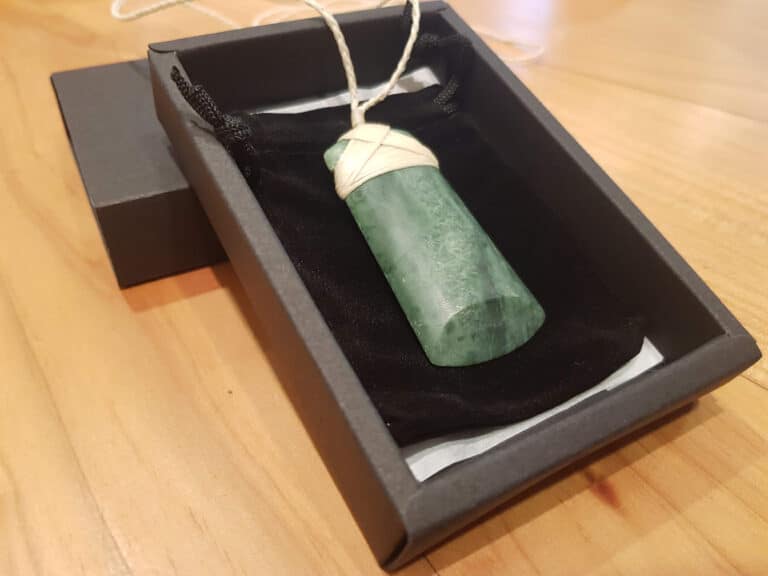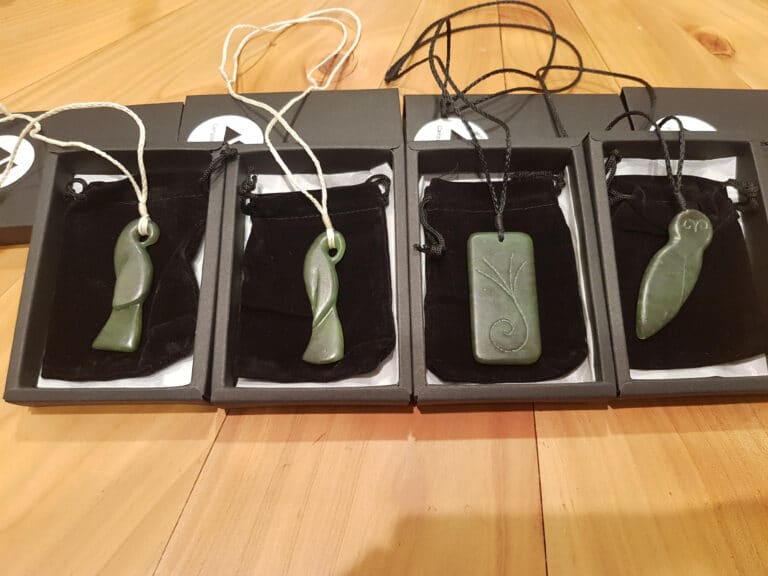Kahurangi Recurved Toki and Roimata Set
This is a deep and beautiful set. A classic Roimata and matching Toki.
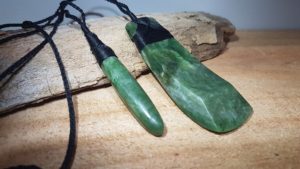
The toki is my recurved design, this accentuates the cutting edge and creates depth that is pleasing to the eye. The toki traditionally represents strength, courage, and authority.
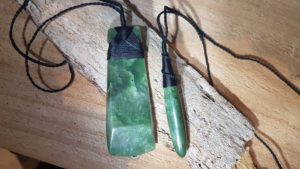
The Roimata has curves that flow similiar to original Roimata and Kuru that were worn from the ear and highly treasured by Maori of high status and mana. A Roimata is a deeply emotional design that traditionally means comfort, healing, and positive energy.
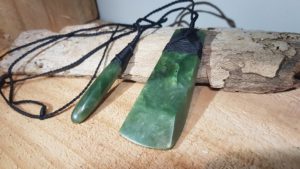
The Design
This set started with a really good design discussion with the customer. He very kindly allowed me to share some excerpts from that conversation here. This is a chance to see how this set was created step by step, right from the initial ideas, and then brought into reality.
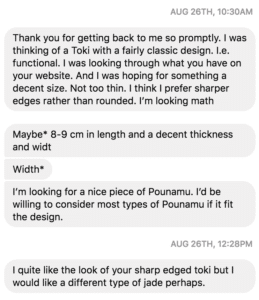
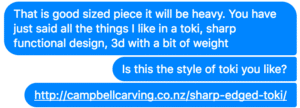
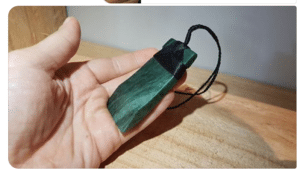
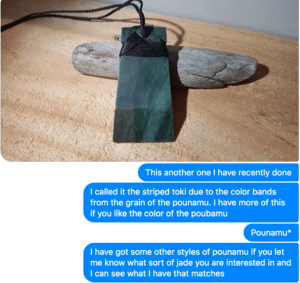
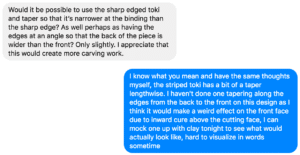
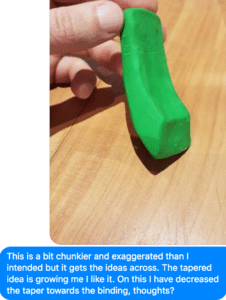
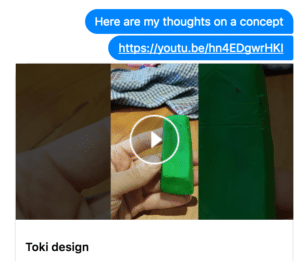
[kad_youtube url=”https://www.youtube.com/watch?v=hn4EDgwrHKI” width=300 height=300 ]
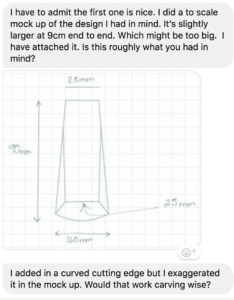
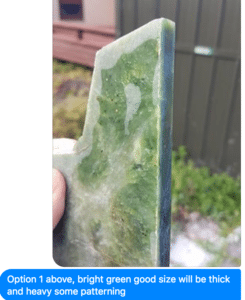
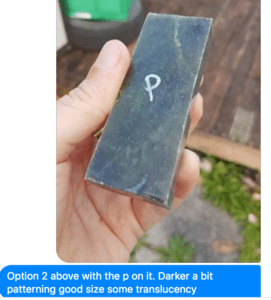
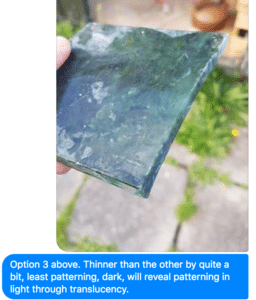
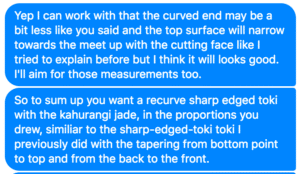
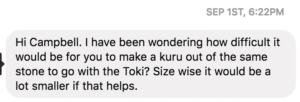
We talked about the designs he liked and he shared his ideas that I built on. He choose the slice of pounamu that would suit his taste best. Just as I was about to start he asked to turn it into a set with a matching kuru, what a great idea.
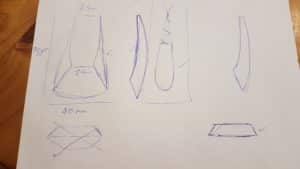
Here are my final sketches that I used to get my head around the Recurved Toki and his design.
Cutting
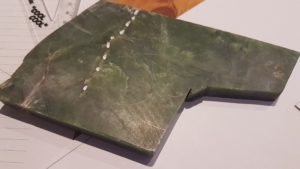
Marking the fracture in the stone so I didn’t include it in the pendant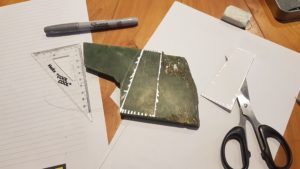
This is the outline for the toki. It is done in silver marker pen so that it shows up clearly when it is wet during cutting.
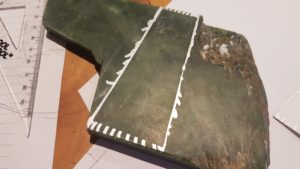
You can see the Roimata marked out on the left in pencil.
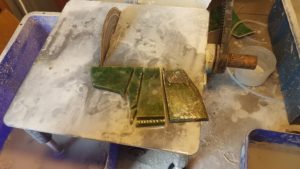
Several cuts were needed to get the blanks to start from. You can see the Toki and Roimata blanks in the middle.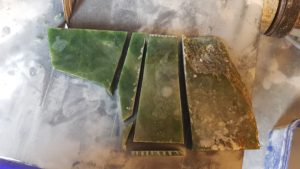
Shaping
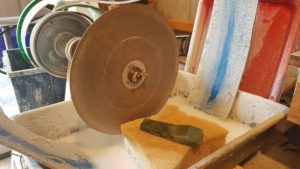
I used this 8 inch diamond lap to do the main shaping on the Toki first. I used the wheel in the back ground for the recurved part. 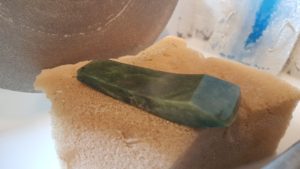
The Toki has gone from the block that was cut out to starting to look like the final form here. Very important to get the proportions right at this stage and ensure that I didn’t go to far by removing too much stone.
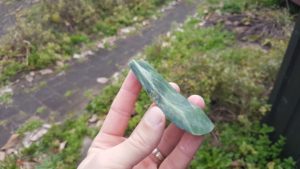
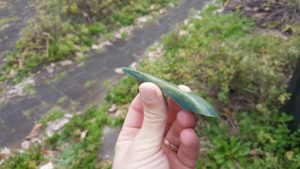
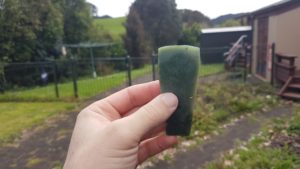
Can see some nice translucency here.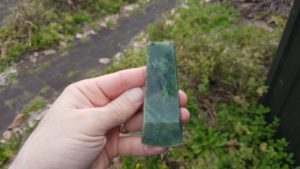
I used the diamond lap to do the initial shaping for the Roimata too. First I rounded the ends.
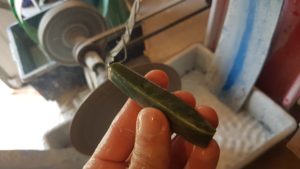
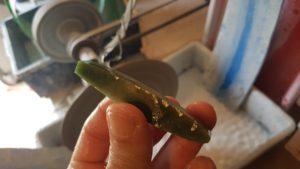
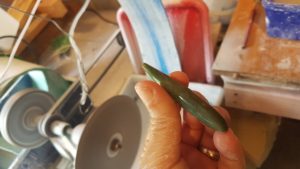
Then went to work on the sides, paying alot of attention to the balance.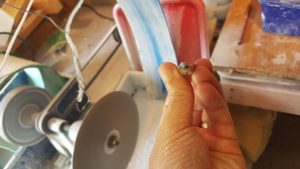
Ensuring it looked balanced and the curves flowed smoothly from all angles.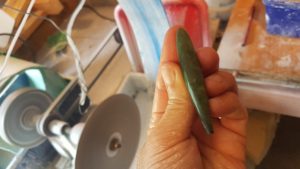
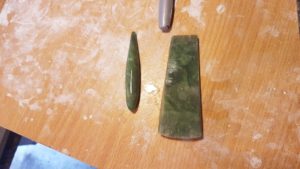
The initial shaping is finished. Now for the sanding and polishing stages. In these photos the Pounamu is wet and it gives a good idea of what it will look like when fully polished.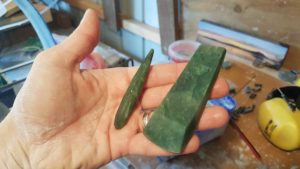
At this stage when it is dry it is a much more of a grey colour.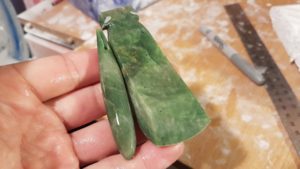
Sanding
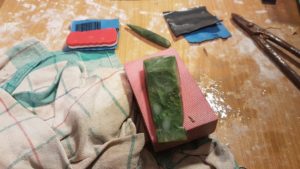
The above photo is during the sanding. I used the red sanding pad at the back on the left for most of the work, with wet and dry sand paper. It takes a long time sanding by hand but the finish is the best. The curves and edges end up flowing into each other really well. When you sit down to a session of hand sanding it is important to have a peaceful mindset, knowing that it will take a while. I think it is a form of meditation actually.
Polishing
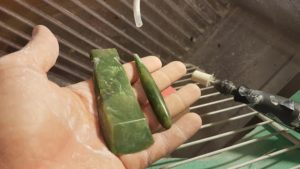
This is just after the polishing has been finished, you can see the wool polishing drum on the dremel in the back ground along with the water tube sticking in from the top of the photo. The final stage was with tin oxide, which is a white powder.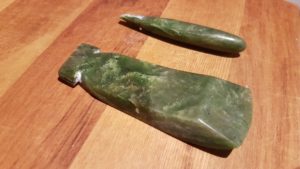
Polishing all done, now time for the lashings. I was really pleased with how well this Pounamu polished. Lower quality Pounamu with a looser grain would not have been able to be polished to this lustre.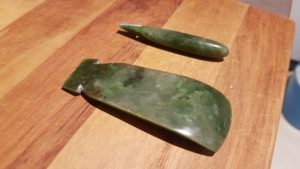
Lashing
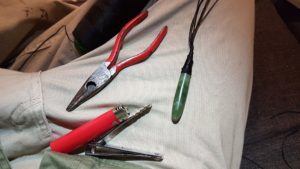
The request was for a spiral lashing on the Roimata, I think it is a great choice on Pounamu with this sort of colouring. You can see how I do this lashing on my tutorial page, see the link in the menu at the top or the bottom of this page. I always lash the Pounamu first then braid the necklace after. This way the strands of the necklace sit more flush with the pendant under the lashing.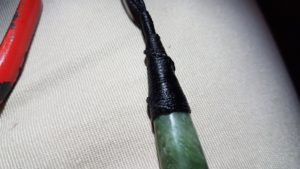
Below is the adjustable sliding knots I use for all my pendants. I prefer these over toggles as it allows the wearer flexibility in how they wear the pendant, high or low. You can also see how I do this on my tutorial page, see the link in the menu at the top or the bottom of this page.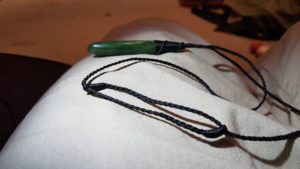
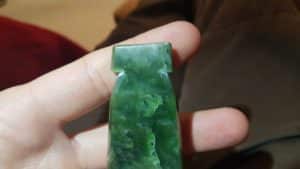
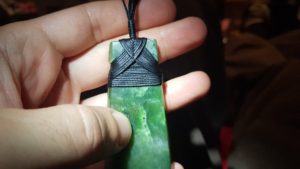
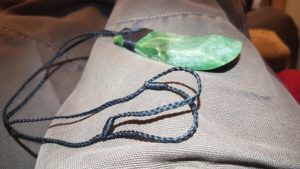
And more shots of the finished product.

